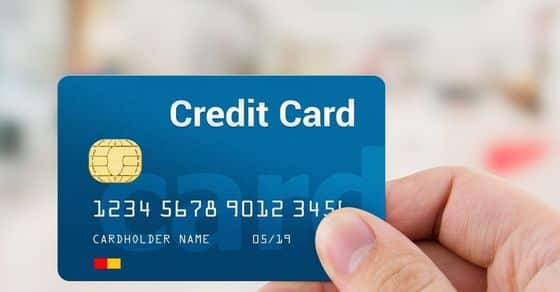Do you know your Credit Card Balance?
One smart way of determining your creditworthiness is knowing your credit card balances. Potential creditors will check your balances to see if you are earning additional credit.
In this article, you will learn how to check your credit balance, how credit balance transfer works, and many more.
What is the Credit Balance on a Credit Card?
A credit card balance is the total amount you owe to your credit card company. The balance changes depending on when and how the card is used. The following are different factors constituting the balance:
- Purchases
- Balance transfers
- Foreign exchange
- Fees such as late payment charges, returned payment charges, and forex and balance transfer fees
- Annual fees and cash advance fees
- Payments
When you use your credit card to make a purchase, the balance increases. When you make a payment, the balance will decrease. The remaining amount at the end of the billing cycle is carried over to the invoice for the next month.
How to Check Credit Card Balance
Knowing your credit card balance is important, especially if you are planning to make a major purchase. You may also want to see how much damage has been done since your last shopping spree or to confirm that your last payment was posted to your account.
Fortunately, you don’t have to wait for your next credit card statement to arrive to find out your current credit card balance. You can easily check your balance via phone, internet, account notifications, or smartphone app.
#1. Calculate your usage rate
You can quickly calculate your own usage rate for all of your cards and for each one individually.
First, make a list of all your credit cards. Make a note of the credit limit and balance for each credit card (you can get this information by checking your account online or by calling the customer service number on the back of your credit card). Then, for each credit card, divide the credit card balance by the credit limit. Multiply by 100 to convert your answer to a percentage.
Any credit card with a balance greater than 30% can have an impact on your credit score. Work on lowering these balances to get better credit.
#2. Check your credit card balance over the phone
Call the number on the back of your credit card to contact your card issuer’s customer service line. Enter your card number using your telephone keypad and some other identification number (such as the last four digits of your social security number or your zip code) and follow the instructions to find out your credit card balance. Many customer service lines can automatically provision your credit without speaking to a representative. Any questions you have about your account or recent transactions should be directed to a living person.
#3. Via Internet
Once you’ve set up an online account for your credit card, your process is simple. Just open a web browser, go to your card issuer’s website and log into your account to check your balance. If you have not yet set up an online account, you can create a new one once you are on the card issuer’s website. Check the back of your credit card or a recent statement for the correct web address of your credit card issuer. If you need assistance, your card issuer’s customer service department can help you set up your account online.
#4. Through regular account notifications
With most credit card companies, after you have set up your account online, you are now free to choose how closely you want to monitor account activity. Even though this feature is mostly meant to stop fraud, you can get email, push notifications, or text messages about everything that happens with your current account. Some companies allow you to set up email notifications to update your current balance after each purchase or monthly payment.
#5. Via smartphone app
If you have a smartphone, you can do most of your bank and credit card controls right on your phone. Most credit card companies have downloadable smartphone and tablet apps that you can use to easily check your credit card balance and other credit card information.
Visit the Apple App Store or the Google Play Store to download your card issuer’s app. When you download and open the app, you will be signed in with the same username and password you would use on the website. Some companies may allow you to set a username and password through the mobile app. If not, go to the lender’s website. Your smartphone or tablet must be connected to the internet or mobile data to access your credit card information through.
What to Look for in a Balance Transfer Credit Card
A decent balance transfer card will include features that allow you to save money while repaying your debt. Look for a balance transfer card with a 0% intro. You’ll save a lot of money on interest and have more time to pay off the full sum without paying extra.”
If the cost of the card exceeds the amount you may save on interest and late penalties, it may be worth investigating an alternative way of debt repayment. Here are some features to look for to make the most of your balance transfer.
- Interest rate and promotional period
- Transfer fee
- Annual fee
Visa Credit Card Balance
The balance on your Visa Gift Card must be verified prior to purchase. Here are a few ways to check the balance on a Visa Gift Card:
MyGiftCard
After receiving a Visa Gift Card, you will need to check your current balance. With the MyGiftCard site, this can be done in a minute. You can easily check your balance through this official portal. To do this, you must register your card in this portal. Here are some easy steps to use this portal:
- Visit www.mygiftcardsite.com on your phone or laptop.
- Enter a card number printed on the card along with a security code. You can find the security code on the back of your card.
- Make sure you are not a robot and log in.
Do you use PayPal? If yes, here is the Bad Side Of PayPal You Probably Are Oblivious To
Credit Card Balance Transfer
A balance transfer is an act of moving outstanding debt on one credit card to another card(usually a new one).
How Do Transfers With Credit Card Balances Work?
After approving a card with a transfer offer for 0% interest credit, check whether the 0% rate is automatic or depends on a credit check. The next step is to determine which credits to transfer. Cards with high-interest rates should come first. (The balance does not have to be in the cardholder’s name to qualify for a transfer.)
Next, calculate the transfer fee, which is typically 3 to 5% ($ 30 to $ 50 per $ 1,000 transfer). Is there a quantity limit on the fee? Otherwise, it may be worth transferring larger credits. Also, check your new card’s credit limit before making a transfer. The requested transfer of funds cannot exceed the available credit line and the transfer fees will be applied toward this limit.
#1. Request the transfer
Although it’s a wire transfer, one credit card actually pays another. Mechanics include:
- Balance transfer checks
The new card issuer (or the issuer of the card to which the balance will be transferred) delivers checks to the cardholder. The cardholder makes the payment on behalf of the card company they wish to pay to. Some credit card companies allow the cardholder to write the check themselves, but make sure this is not considered a prepayment.
- Telephone or online transfers
The cardholder will provide the account information and the amount to the credit card company to which they will transfer the balance, and that company will arrange for funds to be transferred to settle the account. For example, if you pay a balance of $ 5,000 on your high-yield Wells Fargo Visa card and transfer that balance to a Citi MasterCard with a 0% offer, provide Citi with the name, payment address, and number of your Visa account. Card and indicate that $ 5,000 will be deposited into this Visa account.
#2. Beware of the Grace Period
Individuals who take advantage of these offers are sometimes faced with unexpected interest expenses. The problem is that transferring a balance means carrying a monthly balance. If you have a monthly balance by not paying the minimum amount due each month, even if the interest rate is 0%, it could mean you lose the card’s introductory APR, grace period, and surprise interest on new purchases.
The grace period is the time between the end of the credit card billing cycle and the invoice due date. During this period (at least 21 days by law, but more often 25 days), the cardholder does not have to pay any interest for new purchases. However, the grace period only applies if the cardholder does not have any credit on the card. What many consumers fail to realize is that carrying credit when transferring an advertising credit can affect the grace period if minimum payments are not made every month.
For purchases with the new card after the remainder of the transfer has been completed, interest fees are charged without a grace period.
#3. Transfers to Existing Cards
Balance transfers can also be made with an existing card, especially if the issuer has a special offer. However, this can be tricky if the existing card already has a balance that only adds to the transfer.
For example, suppose a cardholder owes $ 2,000 on a 15% APR card before transferring a $ 1,000 balance from a second card. The remaining transfer rate offered is 0% for six months.
The cardholder pays $ 1,000 in six months. However, because the 15% portion of the credit card debt is paid first, the 15% APR for six months applies to the $ 2,000 that was paid to you that were unaffected by the payments. Meanwhile, the card from which the $ 1,000 was transferred has an annual interest rate of 12%, which is a 3% loss.
Also, consider what a large sum adds to a credit card utilization, that is, the percentage of available credit that has been used. This is a key component of your credit score. Say you have a card with a limit of $ 10,000 and an account balance of $ 1,250. You are using 12.5% of your credit limit. Then if you transfer $ 5,000 and create a total balance of $ 6,250, you are now using 62.5% of your credit limit.
This increase in the card balance can hurt your credit score (it’s best to keep the balance below 30% of the limit) and cause the interest rate on these and other cards to go up in the long run. Of course, the lower $ 5,000 balance on the higher-interest card from which the transfer was made mitigates this.
Is it Good to Have Credit on a Credit Card?
No, perhaps one of the biggest credit card myths is that having credit on a credit card is good. Having a balance on your credit card does not help your creditworthiness; it can only hurt you.
Permanent credit in your account has a direct effect on your credit card utilization. This is the loan amount you are using compared to the loan amount available. The higher your credit card balance, the higher your usage rate, which can affect your creditworthiness.
Credit Card Balance Negative
A negative balance on a credit card means your credit card company owes you money, not the other way around. In other words, you’ve paid more than your total balance due. Credit card companies generally prevent you from paying more than you owe, especially online.
How Can You Get a Negative Balance on Your Credit Card?
A negative balance on your credit card is not a form of deception. Instead, it means the credit card company owes you money once. This can be done in a number of ways.
- You have overpaid your credit card bill
A common cause of a negative balance on your credit card statement is that you paid more than you owed. Generally, when you make online payments through the credit card website, the issuer prevents you from paying more than your credit card balance.
However, if you write a check or pay your credit card online from your bank account, the credit card company will accept the overpayment and post the excess as a balance on your bank statement. Negative.
- When you’ve returned something purchased with your credit card
Maybe you bought an item with a credit card and then did the smart thing to quickly pay off the balance. However, he soon found out that the product he bought wasn’t what he needed or that it was broken and returned it. Since you have already paid the remaining balance, this refund will affect your credit card and result in a negative balance.
- You have too many rewards
If you are using a Cashback Reward Credit Card and prefer to use the Rewards as a bank statement balance, you may be mistakenly applying too many Rewards to your balance. This miscalculation results in a negative credit card balance, similar to an overpayment on your credit card by check.
What Can You Do If Your Credit Card Shows a Negative Balance?
Even if the credit card company has your extra money, they won’t keep it or they will refuse to pay it back. One way or another you will get that refund, but the method by which you get the money is generally up to you.
These are some of the common ways you can get this refund.
#1. Just wait
Credit card companies don’t want to keep money that you don’t owe them. If your credit card has a negative balance, you can relax and wait for the credit card company to finish it.
Even if you don’t request a refund, if the negative balance persists for six months, the law requires your credit card company to use a good faith effort to return the money to you. If you’ve moved since then and haven’t updated your address, you might want to do so online or by phone, or the card company’s good faith efforts may land in the wrong mailbox.
However, waiting six months is far from an ideal situation. With so many options to get the money on, it’s best to only use that option in extreme circumstances.
#2. Request a refund of the credit
If you are struggling with money, this credit can come in handy. To speed up getting cash, you can call the credit card company’s customer service team at the phone number on the back of the card and request a refund. Some credit card companies offer you several different refund options, including a check or even a direct deposit into your bank account.
Regardless of which repayment option you choose, it will take a while for the funds to reach you. When requesting a refund, the law gives credit card issuers seven business days to send the money to the cardholder. If you choose to mail a check to you, it will take a few more days for the Post to send it to you.
In some cases, you may want a paper record to support your refund request. In these cases, you can send a written refund request to the credit card company by registered mail.
#3. Use the credit card
This negative balance on your credit card is almost like cash in your bank account. Instead of waiting for a check to arrive in the mail, you can simply use your credit card for future purchases to zero your balance.
Credit Card Balance Positive
Typically, the months you use your card will leave you with a positive balance, which means you owe money. If you pay off such amounts in full each month before the due date, no interest will be charged. And as long as you pay at least the minimum amount required, your account will stay in good shape.
It is generally against the terms and conditions of a credit card to enter a positive limit. However, in such exceptional cases, you can use the card to spend and reduce the loan amount.
What are the Benefits of a Balance Transfer Credit Card?
The ability to save money on interest is a significant advantage of completing a balance transfer. Credit cards with APRs ranging from just under 14% to 24% are rather prevalent. Some balance transfer cards offer a promotional 0% APR for a limited time.
Is There a Balance Transfer Limit?
Balance transfers on credit cards are frequently restricted to an amount equivalent to the account’s credit limit. You can’t usually transfer a debt that exceeds your credit limit—and you won’t know what your credit limit is until you’re approved for the account.
Can You Use a Credit Card After a Balance Transfer?
Even after transferring $8,000, you will still have a $2000 debt. Even if you have paid off the entire sum, you may continue to use the card as before. The account closure may have a negative impact on your creditworthiness.
How Long Does it Take to Transfer a Balance?
A balance transfer is when you transfer a balance from one credit card to another, and it usually takes five to seven days. However, be aware that some credit card companies may take 14 or even 21 days to complete a balance transfer.
Can Balance Transfer Be Denied?
A credit card balance transfer may be declined if, among other things, you have a poor credit history, your transfer request exceeds your credit limit, or you wish to transfer a balance to another card issued by the same issuer.
Is Balance Transfer a Good Idea?
A balance transfer is a good idea if you can lower your interest payments and avoid paying exorbitant fees. It’s a wonderful option for individuals who are convinced they will be able to return their debt within the introductory time.
However, it’s not a good choice for people with bad credit or who can’t get a low enough interest rate. It’s also a terrible idea if your new card has a hefty annual charge or if the fees outweigh the potential savings. It’s pointless to transfer debt from card to card unless it reduces the burden of your monthly payments.
Conclusion
Card issuers figure out your credit card balance by adding up the fees you charged and the interest you owe, as well as fees for late payments, international transactions, cash advances, balance transfers, and annual fees.






